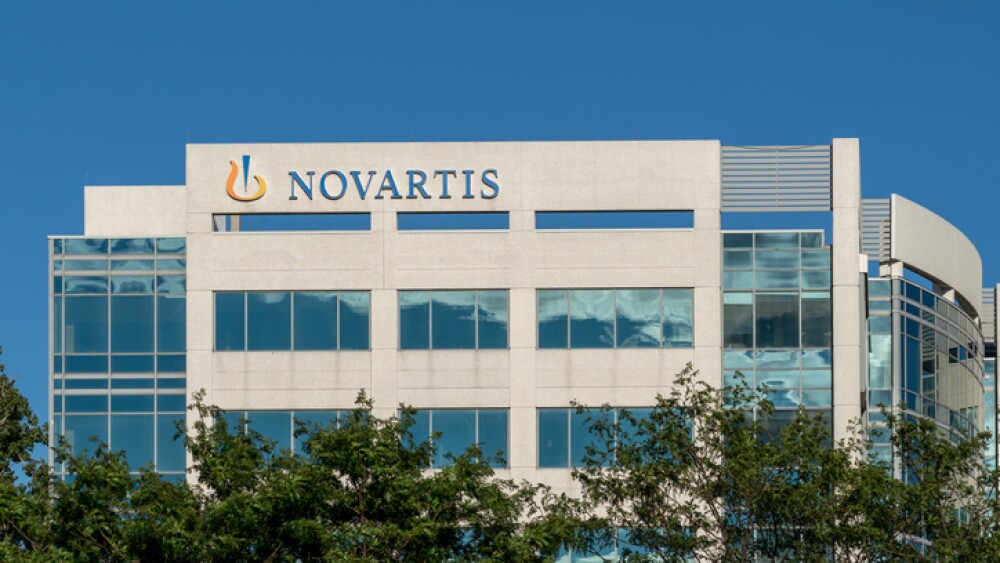- Potential best-in-class extrahepatic in vivo gene editing with all-in-one delivery to the central nervous system (CNS) is a critical milestone for the treatment of neurological disorders -
- Advancements demonstrate the ability to specifically integrate correct copies of complete genes, potentially enabling treatment of any disease caused by a loss-of-function mutation -
EMERYVILLE, Calif., May 14, 2025 (GLOBE NEWSWIRE) -- Metagenomi, Inc. (Nasdaq: MGX), a precision genetic medicines company committed to developing curative therapeutics for patients using its proprietary gene editing toolbox, today announced the presentation of three abstracts at the American Society of Gene & Cell Therapy (ASGCT) 28th Annual Meeting, taking place from May 13 – 17, 2025, in New Orleans, Louisiana. The data showcase Metagenomi’s advancements in compact nucleases for extrahepatic gene editing and CAST (CRISPR-associated transposases) for site-specific integration of large therapeutic genes - underscoring the platform’s potential to drive next-generation, in vivo precision medicines.
“Our metagenomics discovery platform is designed to systematically identify and optimize novel gene editing systems by harnessing both natural microbial evolution and AI-guided protein optimization,” said Brian C. Thomas, Ph.D., CEO and founder of Metagenomi. “At ASGCT, we shared early proof-of-concept data across different gene editing technologies - including compact Type II and Type V nucleases for efficient in vivo editing and a programmable Type V-K CAST system capable of targeted integration of large DNA cargoes. While compact nucleases have the potential to improve delivery to hard-to-reach tissues, CAST are promising new tools to address one of the greatest challenges in gene editing - targeted and precise large gene integration.”
“There remains a need for compact gene editors that can be efficiently delivered via a single AAV - especially for targeting extrahepatic tissues,” said Chris Brown, Ph.D., Head of Discovery at Metagenomi. “Our in vivo AAV data presented at ASGCT demonstrates streamlined, all-in-one delivery of our ultra-compact systems for efficient gene editing in the CNS. By having both Type II and Type V nucleases in our toolbox, we can select the optimal editor based on the target and application. In parallel, our work to discover and engineer a differentiated CAST system has unlocked a key translational milestone - enabling efficient, programmable integration of large gene payloads across multiple in vitro mammalian cell-based models.”
Key highlights from the company’s three poster presentations at ASGCT are below.
A Compact and Potent Type II CRISPR System for CNS Gene Knockdown via AAV Delivery
- MG21-1 is a novel, compact type II nuclease comprising 1,098 amino acids that, when delivered with its guide RNA in a single adeno-associated virus (AAV), achieved strong protein knockdown in the CNS.
- In vivo, localized injection of AAV9 packaged with MG21-1 in the mouse motor cortex produced up to 69% target protein reduction.
- Systemic delivery with a blood-brain barrier-crossing capsid resulted in 82% protein knockdown in the brain and 71% in the brainstem.
- These results demonstrate the potential of a small CRISPR nuclease to efficiently knock-down targets in the CNS using a single AAV injected locally or systemically.
In Vivo Genome Editing with an Ultra-Compact Type V Nuclease for All-In-One AAV Delivery
- MG119-28 is an ultra-compact engineered type V nuclease consisting of 488 amino acids and capable of efficient genome editing across multiple cultured cell tissues when delivered using a single AAV vector.
- In vitro, this nuclease restored dystrophin protein levels by over 50% in Duchenne muscular dystrophy (DMD) model myocytes and achieved complete gene disruption at a therapeutically relevant target locus in K562 human cells.
- In vivo, AAV9-mediated delivery to the mouse CNS via stereotactic injection resulted in up to 52% editing efficiency in olfactory bulb nuclei and produced 64% knockdown of the target protein in the motor cortex.
- These results highlight the potential of this ultra-compact nuclease to deliver AAV-based therapeutic genome editing beyond the liver, with implications for treating neuromuscular and neurodegenerative disorders.
- The data demonstrate that CRISPR-associated transposases (CAST) protein engineering and delivery optimization enables efficient integration of diverse cargo designs across different cell types and target loci, including with therapeutically relevant delivery approaches that are required for in vivo editing.
- Through structure and AI-guided protein design, integration efficiency of a compact type V-K CAST system derived from uncultivated microbes was improved by >50x compared with the natural system.
- Functional activity translated to primary mammalian cells, a key step in development for human therapeutic applications.
- These results suggest that type V-K CAST are promising systems for site-specific programmable integration of gene-sized donors for therapeutic and biotechnological development.
About Metagenomi
Metagenomi is a precision gene editing company leveraging the power of artificial intelligence and machine learning to develop the next generation of potentially curative genome editing therapeutics. Its metagenomics-derived gene editing toolbox has analyzed over 7.4 billion proteins and has the potential to target any type of genetic mutation across the entire human genome. The Company’s innovative and comprehensive platform has full spectrum gene editing, with technologies ranging from ultra-small nucleases and base editors to large gene integrations using CRISPR-associated transposase (CAST) and RNA-Mediated Integration Systems (RIGS). The Company’s lead, wholly-owned development program in Hemophilia A is a potentially curative therapy designed to provide life-long protection from bleeding events and joint damage in adults and children. The Company has additional wholly-owned assets in its pipeline for secreted protein deficiencies and partnered assets for cardiometabolic diseases. For more information, please visit https://metagenomi.co.
Forward-Looking Statements
This press release contains “forward-looking statements” within the meaning of Section 27A of the Securities Act of 1933 and Section 21E of the Securities Exchange Act of 1934, each as amended. Such statements, which are often indicated by terms such as “anticipate,” “believe,” “could, ”“estimate,” “expect,” “goal,” “intend,” “look forward to,” “may,” “plan,” “potential,” “predict,” “project,” “should,” “will,” “would” and similar expressions include, but are not limited to, any statements relating to our product development programs, statements concerning the potential of therapies and product candidates, and any other statements that are not historical facts. Forward-looking statements are based on management’s current expectations and are subject to risks and uncertainties that could negatively affect our business, operating results, financial condition, and stock value. Factors that could cause actual results to differ materially from those currently anticipated include: risks relating to our growth strategy; our ability to obtain, perform under, and maintain financing and strategic agreements and relationships; risks relating to the results of research and development activities; risks relating to the timing of starting and completing clinical trials; uncertainties relating to preclinical and clinical testing; our dependence on third party suppliers; our ability to attract, integrate and retain key personnel; the early stage of products under development; our need for substantial additional funds; government regulation; patent and intellectual property matters; competition; as well as other risks described in “Risk Factors,” in our most recent Form 10-K and our most recent 10-Qs and other risk factors set forth from time to time in our filings with the Securities and Exchange Commission made pursuant to Section 13 or 15(d) of the Securities Exchange Act of 1934, as amended. We expressly disclaim any obligation or undertaking to release publicly any updates or revisions to any forward-looking statements contained herein to reflect any change in our expectations or any changes in events, conditions or circumstances on which any such statement is based, except as required by law, and we claim the protection of the safe harbor for forward-looking statements contained in the Private Securities Litigation Reform Act of 1995.
Investor Contacts:
Stephen Jasper
Gilmartin Group
stephen@gilmartinir.com
or
Kiki Patel, PharmD
Gilmartin Group
kiki@gilmartinir.com





